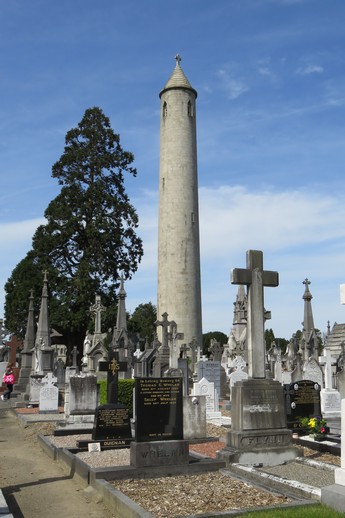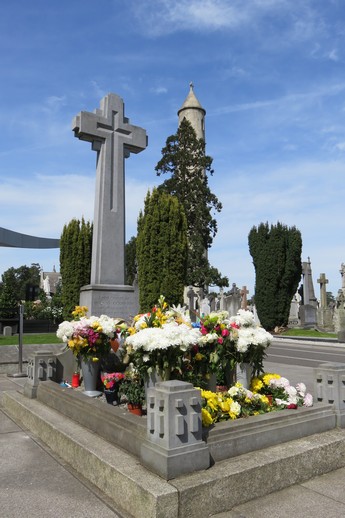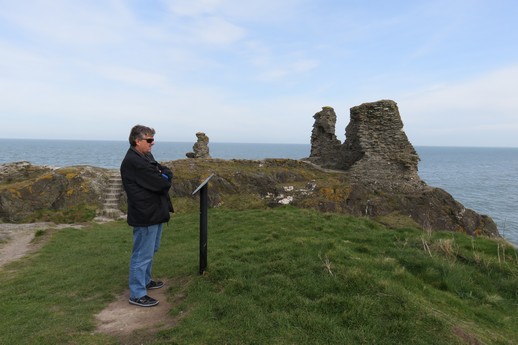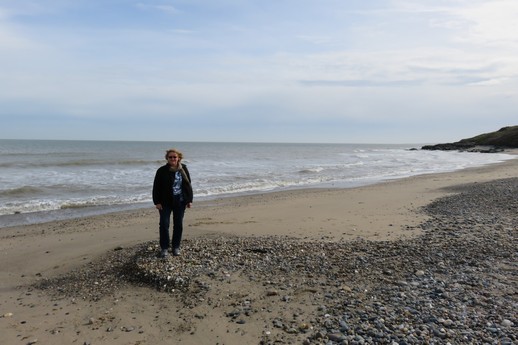For the balance of our Irish adventure we are driving, so this morning we caught the light rail and dragged our bags to the car rental agency to collect our car. Despite having a prepaid booking with all options pre-selected, we still had to endure almost 45 minutes of “would you like to upgrade this”, and “insure that”, and “your windscreen will certainly be smashed to pieces and your tyres slashed if you go to Kerry”.
We eventually completed the transaction and merged into the Dublin traffic having decided to stop at Glasnevin Cemetery on our way out of Dublin. The first burial in Glasnevin was in 1832 and since then more than 1.5 million people have been interred or cremated there. There are more people buried in Glasnevin than are walking around Dublin today. There are many areas of communal burial within the cemetery – mostly due to mass outbreaks of cholera and the plague. One cholera burial pit contains over 12,000 bodies.

The cemetery was founded by Daniel O’Connell who wanted to provide a non-denominational burial site for Dublin’s citizens. Daniel was an Irish political leader in the first half of the 19th century. He campaigned for Catholic emancipation – including the right for Catholics to sit in the Westminster Parliament, denied for over 100 years – and repeal of the Act of Union which combined Great Britain and Ireland. He and six of his direct descendants are buried above ground in lead lined coffins stored in the family crypt upon which stands a very tall, round tower.

The cemetery contains most all of the several hundred combatants and innocent civilians killed during the 1916 Easter Rising. The ring leaders who were tried and executed were initially buried elsewhere in unmarked graves but have since been relocated to Glasnevin.
Michael Collins’ grave is the most visited grave in the cemetery and is always decorated with flowers. Our tour guide said people travel from all round the world to deliver flowers and to pay their respects. Collins was a soldier and politician who was a leading figure in the struggle for Irish independence in the early 20th century. He was shot and killed in an ambush in August 1922 during the Irish Civil War. His popularity is likley due to his charming good looks and a life cut short in its prime with the burgeoning promise of a statesman like legacy.
We set off for Kilkenny driving along the coast enjoying views of the Irish Sea between dodging oncoming vehicles along the narrow and winding road. Wicklow was a cold and windy outcrop.

Chris was not able to be persuaded to go for a swim in the Irish Sea. The beach was covered with coarse sand and the rocks upon which Chris is standing (below) were flat and would have made fabulous skip stones had we been brave enough to go anywhere near the water. And had we tried to skip these across the sea, they would surely have reached England as (again) the Irish Sea was unbelievably flat. No chance of any surfing on this beach.
